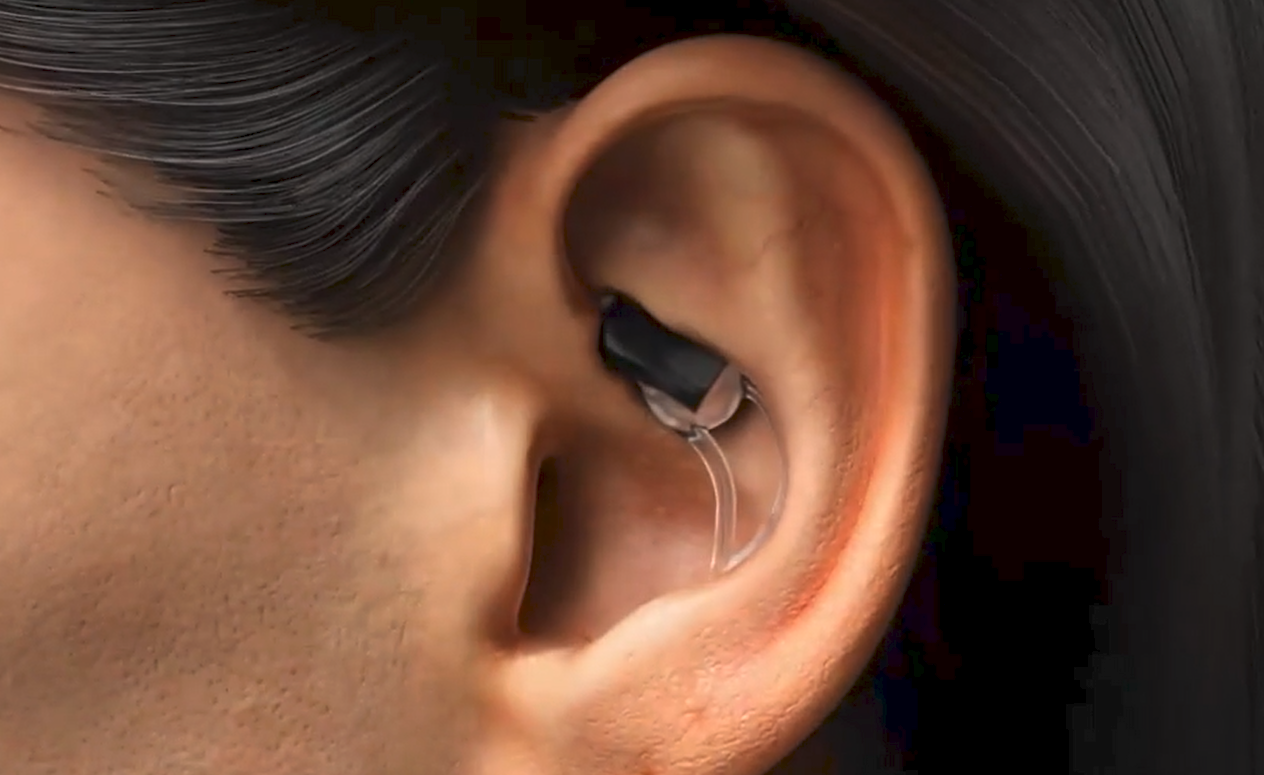With $5.1 million in funding, the STAT earpiece measures blood flow to head 24/7 to better understand symptoms that occur upon standing, such as dizziness, brain fog, headaches, fainting, and fatigue
BOSTON, MA / ACCESSWIRE / June 13, 2023 / Today, STAT Health emerges from stealth to introduce a 24/7 in-ear wearable that measures blood flow to the head to better understand symptoms such as dizziness, brain fog, headaches, fainting, and fatigue that occur upon standing. These are common symptoms for illnesses like long COVID, postural orthostatic tachycardia syndrome (POTS), myalgic encephalomyelitis/chronic fatigue syndrome (ME/CFS), and other orthostatic (caused by standing) syndromes that affect more than 13 million Americans. Clinically tested at Johns Hopkins and peer-reviewed in the March 2023 issue of Journal of the American College of Cardiology (JACC), the device has been shown to predict fainting minutes before it happens.
The company is backed by $5.1 million in seed funding from J2 Ventures, BonAngels Venture Partners, and a diverse group of prominent angel investors. The company has also received grant funding from the U.S. Air Force.
Blood Flow to the Head is What Matters
Many people with illnesses like long COVID, POTS, and ME/CFS suffer from symptoms caused by reduced blood flow to the brain upon standing. While theoretically understood, this has been difficult to experimentally prove, until now. Doctors at Johns Hopkins, Brigham and Women's, and Harvard Medical School have used ultrasound to demonstrate that Cerebral Blood Flow (ultrasound-measured flow in cerebral arteries as a method of quantifying blood flow to the head) is a key biomarker that objectively measures the presence and severity of many of these "invisible illnesses."

"Cerebral Blood Flow (CBF) is the critical missing vital sign - poor CBF is the cause of common orthostatic symptoms such as dizziness and brain fog. My Dutch colleagues have measured this with ultrasound on over a thousand patients," said Peter Rowe, M.D., Sunshine Natural Wellbeing Foundation Professor of Chronic Fatigue and Related Disorders, Johns Hopkins Medicine. "However, it's not easy to measure CBF, so most clinics approximate using secondary metrics of Heart Rate and Blood Pressure, which often mislead. Unfortunately, this frequently leads to the wrong conclusion that the symptoms are just psychological, when in fact, there are physiological abnormalities."
The Ear as a Biometric Gold Mine
To fit into a wearable form factor, STAT uses an optical sensor instead of ultrasound and taps into a shallow ear artery to measure a proxy to ultrasound-derived Cerebral Blood Flow.
"It's well understood that the ear is a biometric gold mine because of its close proximity to the brain and major arteries. This allows for new biometrics such as Blood Flow to Head and Blood Pressure Trend* to be possible," said Daniel Lee, co-founder and CEO of STAT Health. "In addition, the ear is largely isolated from data corruption caused by arm motion - a problem that plagues current wearables and prevents them from monitoring heart metrics during many daily tasks. The ear is really the ideal window into the brain and heart."
About the STAT Wearable
STAT is the world's smallest wearable, half the rigid volume of Bose sleepbuds, and even smaller than some invisible-in-the-canal hearing aids. In addition to the advanced optical sensors, the device incorporates an accelerometer, a pressure sensor, temperature sensors, AI edge computing, multi-day battery life, and a micro solar panel.
STAT can be worn in-ear 24/7 - it co-exists with more than 90% of devices that go in/around your ear, and can be left in while sleeping and showering. And because it can charge using solar while in-ear, some may never have to take it out to charge.
The STAT earpiece auto-detects a user's every stand to track how Heart Rate, Blood Pressure Trend*, and Blood Flow to Head change in response. STAT distills that into an Up Score to track time spent upright, and a Flow Score to help users pace their recovery by watching for blood flow abnormalities. STAT then learns about each user's unique body over time to provide personalized coaching to promote healthy lifestyle choices, such as informed hydration/salt intake, and paced rehab.
"Nobody has realized the ear's true potential due to the miniaturization and complex systems design needed to make a practical and user-friendly ear wearable. I've been pioneering ultra miniature in-ear electronics for about a decade including my work bringing Bose sleepbuds to market, and it still took us three years to figure this out," said Lee, "After multiple engineering breakthroughs, we've succeeded in unlocking the ear to combine the convenience and long-term nature of wearables with the high fidelity nature of obtrusive clinical monitors. No other device comes close along the axes of wearability and cardiac signal quality, which is why we believe STAT is truly the world's most advanced wearable."
The company is now taking pre-order reservation deposits on their newly-launched website, www.stat-health.com, offering VIP early adopter perks including early access, beta test opportunities, and more.
Images available here: LINK
About STAT Health
STAT Health is a digital health company improving the quality of life for people living with cardiovascular disease, starting with orthostatic syndromes. STAT does this through its hardware platform - its in-ear wearable - and targeted software programs built atop STAT's unparalleled 24/7 cardiac data. Founded in 2020, STAT Health has received more than $5.1 million in financing. The founders, Daniel Lee and Paul Jin, previously ran Bose's Health Product Innovation Group, and Lee was the inventor of Bose sleepbuds. For more information, visit www.stat-health.com.
*STAT's BP Trend algorithm does not output mmHg, but instead provides a 0-20 Trend score. It is not intended for diagnostic use and intentionally cannot be compared against diagnostic criteria such as the 130/80 mmHg threshold.
Media Contact:
Erica Zeidenberg
Hot Tomato Marketing
[email protected]
925.518.8159
SOURCE: STAT Health




